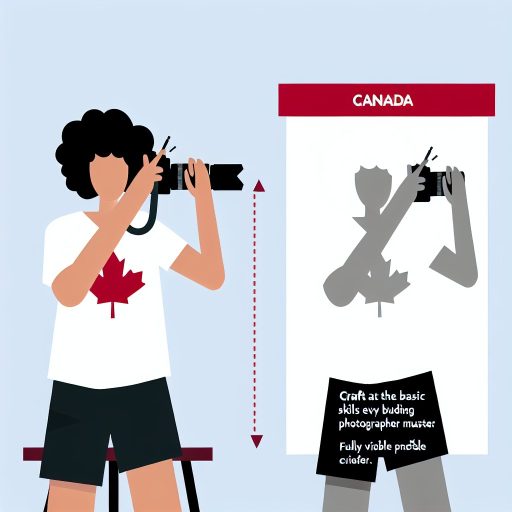Define Your Brand Identity and Target Audience
Understanding Brand Identity
Your brand identity shapes how consumers perceive your label.
It includes your logo, color palette, and typography.
Focus on what makes your designs unique.
For example, you may emphasize sustainability or luxury.
Clearly defining your brand narrative creates a strong foundation.
Identifying Your Target Audience
Identify who will wear your designs.
Consider factors like age, gender, and lifestyle.
Understanding your audience drives design decisions.
Conduct surveys or interviews to gather insights.
This research helps refine your brand message.
Creating a Mood Board
A mood board visually articulates your brand identity.
Include images, textures, and colors that inspire you.
This tool ensures consistency across all platforms.
Moreover, it aids in presenting your vision to others.
Establishing Your Brand Values
Your brand values reflect what you stand for.
Define principles like ethics, quality, and creativity.
These values resonate with consumers on a deeper level.
For instance, if eco-friendliness is essential, make it known.
Communicate these values clearly in your marketing.
Building a Brand Story
A compelling brand story captivates your audience’s attention.
Share your journey and what inspired you to start.
Connect emotionally by highlighting challenges and triumphs.
Engagement with your audience increases brand loyalty.
Leverage social media platforms to tell your story visually.
Conduct Market Research and Analyze Competitors
Understanding the Market Landscape
Begin by identifying your target audience for your fashion brand.
Unlock Your Career Potential
Visualize a clear path to success with our tailored Career Consulting service. Personalized insights in just 1-3 days.
Get StartedUnderstand their preferences, lifestyle, and purchasing habits.
Research for emerging trends that resonate with your audience.
Utilize online surveys and social media to engage with potential customers.
Identifying Competitors
Next, create a list of competitors within your niche.
Examine established brands and up-and-coming designers.
Visit their websites, social media, and online shops to gather information.
Analyze their product offerings, price points, and customer engagement strategies.
Analyzing Competitor Strategies
Look for what differentiates each competitor in the market.
Identify their strengths, weaknesses, opportunities, and threats (SWOT analysis).
Consider their brand messaging and visual identity.
Take note of customer feedback and reviews on their collections.
Finding Gaps in the Market
Evaluate the data collected to identify unmet needs.
Look for areas where customer expectations are not being met.
Consider trends that competitors may have overlooked.
Think about how your brand can fill these gaps effectively.
Staying Updated on Industry Trends
Follow fashion industry news and publications for updates.
Subscribe to relevant newsletters and blogs to stay informed.
Attend trade shows and fashion events for firsthand insights.
Join fashion groups and networks for greater collaboration opportunities.
Create a Unique and Compelling Brand Story
The Importance of a Brand Story
A strong brand story defines your fashion label’s identity.
It connects your audience to your vision and values.
Additionally, a compelling story builds customer loyalty.
Defining Your Brand’s Identity
Begin by establishing what sets your brand apart.
Identify your target audience and their preferences.
Consider the emotions you wish to evoke through your designs.
This clarity will guide your storytelling process.
Crafting Your Narrative
Start your narrative with your personal journey.
Share your inspiration and challenges faced in design.
Incorporate anecdotes that may resonate with your audience.
Highlight any unique techniques or materials you use.
Using Visuals to Enhance Your Story
Visual storytelling can amplify your brand narrative.
Utilize images that reflect your brand’s aesthetic.
Consider videos that showcase your operations or design process.
Leverage social media platforms to share your visuals effectively.
Engaging Your Audience
Encourage your customers to be part of your story.
Feature testimonials and user-generated content on your site.
Consider hosting events or workshops to foster engagement.
This involvement will strengthen their connection to your brand.
Consistency in Your Brand Message
Ensure that all aspects of your business reflect your story.
Your logo, packaging, and marketing materials should align.
This consistency reinforces your brand identity over time.
Regularly revisit and update your brand message as needed.
You Might Also Like: Tools and Technologies Modern Archivists Rely On
Develop a Business Plan Outlining Goals and Strategies
Defining Your Vision
Start by clearly defining your vision for the brand.
Your vision should articulate what you want to achieve.
Write a strong mission statement to guide your brand’s development.
Setting Goals
Establish short-term and long-term goals for your brand.
Ensure your goals are specific, measurable, achievable, relevant, and time-bound.
For example, aim to launch your first collection within one year.
Additionally, consider your financial goals, such as revenue targets.
Developing Strategies
Outline strategies that will help you meet your goals.
Consider branding, marketing, and supply chain strategies.
Your branding should resonate with your target audience.
Moreover, use social media to increase brand visibility and engagement.
Conducting Market Research
Research your target market to understand their preferences.
Identify your competitors and analyze their strengths and weaknesses.
This information will guide your product development and marketing strategies.
Creating Financial Projections
Make realistic financial projections for your brand.
Include start-up costs, operating expenses, and sales forecasts.
Consider hiring a financial advisor to help with planning.
Creating a Timeline
Develop a timeline for launching your brand.
Break down tasks into manageable steps with deadlines.
This timeline will help keep you on track throughout the process.
Evaluating and Adjusting Your Plan
Regularly evaluate your business plan as you progress.
Be prepared to make adjustments based on market feedback.
Your flexibility will enhance your chances of success.
You Might Also Like: How to Price Your Work as a Graphic Designer
Design a Cohesive Collection that Reflects Your Brand
Establish Your Brand Identity
Your brand identity shapes your collection’s overall theme.
Begin by defining your vision and values.
This clarity will guide all your design decisions.
Research Current Trends
Stay updated with the latest fashion trends.
Explore both contemporary and historical influences.
This knowledge informs your unique design perspective.
Create a Color Palette
Select colors that resonate with your brand’s personality.
Ensure your palette creates a harmonious visual effect.
Test various combinations before finalizing your choices.
Choose Fabrics and Materials
Your fabric selection impacts the overall feel of your collection.
Consider texture, weight, and sustainability when choosing materials.
Incorporate innovative materials if it aligns with your aesthetic.
Sketch Your Designs
Begin with rough sketches to explore different ideas.
Focus on key silhouettes that complement your vision.
Refine your sketches based on feedback from peers.
Develop a Consistent Silhouette
Consistency in silhouette creates a recognizable brand image.
Choose a few key shapes that embody your design philosophy.
Ensure each piece fits within this established silhouette framework.
Experiment with Patterns and Textures
Integrate unique patterns and textures to enhance your collection.
Mix and match to create visual interest and depth.
However, maintain cohesion to avoid overwhelming your audience.
Finalize Your Collection
Review each piece in relation to your overall theme.
Make adjustments to ensure every item enhances your vision.
Prepare to present your cohesive collection confidently.
See Related Content: Graphic Design Career Paths You Need to Explore

Establish a Production Plan and Sourcing Partners
Creating a Solid Production Plan
Start by outlining your production goals.
Define your target audience and style aesthetic.
Next, consider the materials you’ll need.
Research sustainable sourcing options whenever possible.
Additionally, evaluate your production capacity based on demand.
It’s vital to outline a clear timeline for production.
Establish milestones to track your progress effectively.
Finding Reliable Sourcing Partners
Begin your search for suppliers that align with your brand values.
Attend industry trade shows to connect with potential partners.
Utilize online platforms to find manufacturers and fabric suppliers.
Request samples from multiple sources to evaluate quality.
Additionally, check references and reviews from previous clients.
Negotiating with Your Partners
Once you’ve identified potential suppliers, start negotiations.
Discuss pricing, terms, and production timelines upfront.
Be clear about your expectations regarding quality and communication.
Prepare for negotiations by having a clear budget in mind.
Moreover, be willing to compromise where necessary without compromising quality.
Building Strong Relationships
Establishing a rapport with your suppliers is crucial.
Communicate regularly to keep them informed of your needs.
Show appreciation for their work and support.
Additionally, address any issues promptly to maintain trust.
Fostering a positive working relationship can lead to better terms.
Finally, consider making visits to their facilities if feasible.
Gain More Insights: Common Challenges for Graphic Designers and Solutions
Implement Effective Marketing Strategies for Visibility
Leverage Social Media Platforms
Social media is essential for fashion brand visibility.
Use platforms like Instagram and TikTok to showcase your designs.
Create engaging content that reflects your brand’s style.
Consider collaborations with influencers to reach wider audiences.
Develop a Strong Brand Identity
Your brand identity sets you apart from competitors.
Create a memorable logo and consistent color palette.
Maintain a cohesive visual style across all marketing materials.
This also includes your website and social media profiles.
Utilize Email Marketing
Email marketing remains a powerful tool for brand engagement.
Build an email list by offering exclusive promotions.
Send regular newsletters to keep your audience informed.
Share updates about new collections and behind-the-scenes content.
Attend Fashion Events
Participating in fashion shows increases brand visibility.
Network with industry professionals and potential customers.
Use these events to showcase your latest collections directly.
Also, consider organizing pop-up shops in trendy locations.
Optimize Your Website for SEO
Your website must be user-friendly and optimized for search engines.
Use relevant keywords throughout your site to improve visibility.
Regularly update your blog with fashion-related content.
This will draw organic traffic to your website over time.
Utilize Social Media and E-Commerce Platforms for Sales
Leverage Social Media
Social media is a powerful tool for fashion brands.
It allows you to connect directly with your audience.
Platforms like Instagram and TikTok can showcase your designs.
Use high-quality images and engaging videos to attract attention.
Be consistent with your posting schedule for maximum reach.
Additionally, employ hashtags to increase discoverability.
Engage with followers through comments and messages.
This builds a loyal community around your brand.
Explore E-Commerce Platforms
E-commerce platforms simplify online sales for fashion brands.
Consider using well-established sites like Etsy or Shopify.
These platforms provide user-friendly interfaces for sellers.
Set up a professional online storefront to display your collection.
Make sure to include detailed product descriptions and high-quality images.
Offer secure payment options to ensure customer confidence.
Rate your performance through sales analytics available on these platforms.
Implement a Marketing Strategy
A clear marketing strategy boosts your brand’s visibility.
Utilize social media ads to target specific demographics.
Consider influencer collaborations for broader exposure.
Evaluate your performance and adjust campaigns accordingly.
Create promotional events or sales to stimulate interest.
Keep your audience engaged with regular updates and new collections.
This will foster brand loyalty and encourage repeat purchases.
Additional Resources
How I got a Global Talent UK visa: a comprehensive guide and my …




